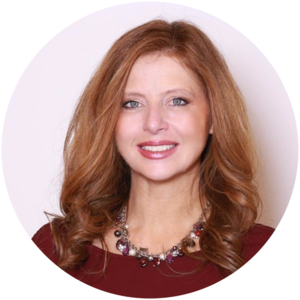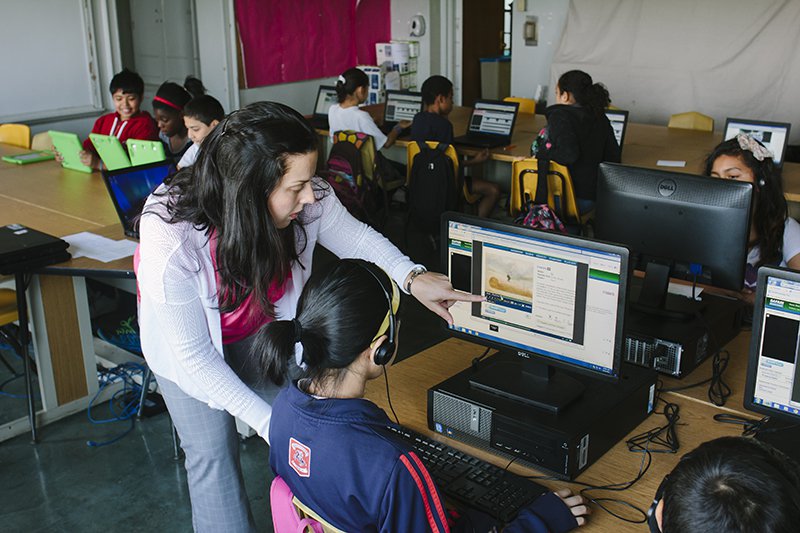School district administrators across the country are moving full steam ahead with personalized learning implementations. The promise of these initiatives is a lofty one; the customization of learning paths to meet the individual needs of students and yield highest levels of attainment for every learner. Yet there is a major breach between the traditional ways of teaching and the emerging world of personalized learning. One educator found a way to successfully juggle the many aspects of facilitation in a personalized classroom and scale that model nation-wide through a teaching framework that has been adopted by some of the largest districts in the US.
While personalized learning success stories abound, there are just as many instances where teachers find themselves policing among rows of students on computer screens, or students using the digital options as a reward or reinforcer, without a true infusion of technology into the daily work of student instruction. The cost to students is the full-promise of transformative personalized learning. Teachers need a new solution, one that shows the “how” of teaching in this new era. Moreover, they need the ability to seemlessly incorporate classroom technologies.
Correctly implemented, personalized learning frees the teacher from rote and data-heavy tasks and gives them the time to work more directly with learners. However, asking teachers to move away from front-of-room direct instruction towards a more facilitated and student-led approach to teaching and learning is no small request.
 Robin Gonzales founded Zia Learning after major realizations about how personalized learning is also a new approach to facilitated instruction, leveraged by technology. With over 15-years of experience in public education, she has made it her life’s passion to support teachers with a practical solution to their transition woes, through a set of frameworks, professional development and student readiness programs. “Teachers are having a difficult time making the shift to personalized learning and really understanding their new role in a 21st Century classroom,” she stated. “Teachers have been trained as experts in their content area but to make this leap they need a clear framework and professional development on the many facets of personalized learning and what it means to facilitate the learning process in a technology rich environment.”
Robin Gonzales founded Zia Learning after major realizations about how personalized learning is also a new approach to facilitated instruction, leveraged by technology. With over 15-years of experience in public education, she has made it her life’s passion to support teachers with a practical solution to their transition woes, through a set of frameworks, professional development and student readiness programs. “Teachers are having a difficult time making the shift to personalized learning and really understanding their new role in a 21st Century classroom,” she stated. “Teachers have been trained as experts in their content area but to make this leap they need a clear framework and professional development on the many facets of personalized learning and what it means to facilitate the learning process in a technology rich environment.”
If you haven’t been in a classroom for many years, let’s just say this is an epic shift in required teaching skills. Gonzales thinks this shift in teaching happened at least five years ago and the evolution of methods is just catching up. “I believe that the pedagogy (teaching) predates the technology. Personalized learning is enabled through new 21st Century Tech and allows for teachers to authentically differentiate and individualize instruction and spend more time on the application of knowledge” she said. “When we talk about the constructivist theories of education, we think about Piaget and his theory of cognitive development as well as other models of instruction; multiple intelligences, differentiated instruction, data-driven decision making. These are all pedagogies that have been around, in some cases for centuries and, in other cases, for decades, but they were all very difficult things to implement. New technologies give us data, multiple learning paths and most importantly the time to work with small groups or even individual students.”
Gonzales is working in districts across the US to ensure that personalized learning goes far beyond using online programs in traditional classrooms. “True personalized learning leverages the technology for what it does best (providing data, allowing for multiple personalized learning curriculum paths) and then frees the teacher from that daily front of room instruction and other tasks to allow for them to support the whole-child. Teachers can then begin to truly know their students’ needs, both academic and social-emotional.”
“Personalized learning is made possible through real-time, formative and adaptive assessments coupled with personalized learning plans, content and lessons that are often delivered via automated systems,” states Gonzales. “Today’s tech enables true personalized learning with timely data which then can be used to tailor individual student learning paths simply and easily for any teacher. Once all the analyzing and tracking duties are taken care of [with the introduction of software] teachers now have the time to take care of the students individually. That’s known as the Time-Technology Swap. The technology takes care of certain components and it actually augments the teacher’s availability in the classroom to serve his or her students and student groups.”
While teachers have more interaction with students in a personalized classroom, students are also called upon to work more independently while completing digital or project components. This means that teachers are also being asked to support self-directed learners. In addition, new pressures to also provide social-emotional support are growing as a solution to underachievement. Gonzales says the two fit perfectly together. “The time gained from implementing a personalized model and the call to move away from direct instruction allows the teacher to better know their students and to address needs beyond the academic context.”
Gonzales states that we must be mindful that students may not be ready for this new autonomous role. While students are indeed digital natives, they oftentimes lack digital citizenship, time management, pacing, motivation, goal setting and communication skills that are requisite to success in a personalized learning model. Zia Learning addresses this need through a student Skills for Success program that couples social emotional skills with 21st century and autonomous learning skills.
While education leaders have been quick to see the potential of personalized learning, the rightful question she hears most often from teachers is “if I’m not teaching the content and delivering lessons then what exactly am I supposed to do?” The answer? Develop a highly engaging learning environment that allows for individualized instruction and deeper application of knowledge. In short, facilitate learning.
Gonzales has codified this role of teacher as facilitator in a clear, user friendly framework that breaks down the art of facilit ation into four clear domains
ation into four clear domains
- Coach (in this domain teachers focus on the mentoring aspects of teaching and supporting students socially-emotionally)
- Direct (teachers focus on the use of data in this domain, including analyzing and interpreting data as well as the development of personalized learning plans based on that information)
- Design (this domain focuses on the actual layout of the physical classroom in a personalized model as well as grouping for instruction)
- Apply (in this domain teachers focus on critical thinking skills, project based learning options and the application of knowledge in real-world contexts)
What Zia Learning is doing is giving today’s teacher the opportunity—the superpower—to enable their best teaching practices. Gonzales warns that if you have implemented a personalized learning model and see what she calls KICCC in your classrooms (Kids in Cubicles Clicking Computers) then you might want to visit the Framework and work towards moving beyond adoption and augmentation and towards true transformation of teaching and learning.
Zia Learning is a leading voice in the professional learning and development arena who is saying that the new teacher role is a vital one, and one that takes strong PD support. This new PD approach will give teachers time and the flexibility to create interesting project-based and applied learning options.
Teaching, learning and ultimately outcomes can be enhanced with computers in student’s hands. Zia has zigged in to help teachers learn critical new facilitation skills, while also helping students to strengthen their self-directed learning skills. “It’s how every teacher will teach and how every student will learn in the 21st century,” says Gonzales.










